#ballroom culture
Explore tagged Tumblr posts
Text
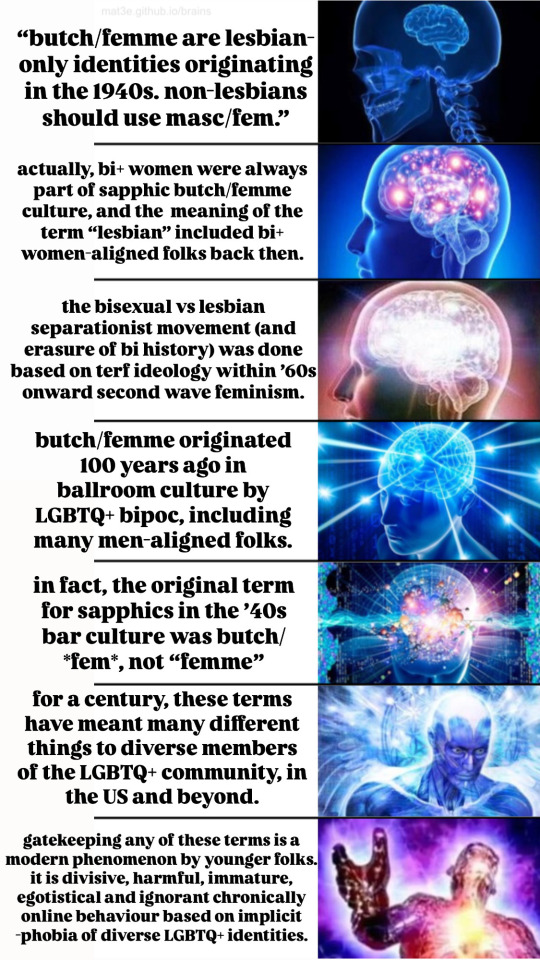
I learned a lot today from Obviously Queer’s video essay “FEMME: Lesbian History, Identity, Politics and Invisibility” and femmebis’ “The “Lesbian-Only Term” Myth: A Comprehensive Historical Essay on ‘Butch’ and ‘Femme’ ”.
#sapphic#butchfemme#wlw#lesbian#bisexual#honestly i could make another one of these just about what femme can mean to different folks#lgbtq+#femme#butch#masc#fem#bipoc#queer#queer bipoc#bi+#mspec#bi#lgbt#lgbtq#lgbt+#gay#lesbian bars#ballroom culture#genderqueer#masculine#feminine#masculinity#femininity#butch4femme#femme4butch
12K notes
·
View notes
Text
youtube
Important takeaways include:
Nobody actually knows the origin of butch.
Butches were harassed out of visibility by some of the early lesbian orgs.
'Butch' first became widespread in working-class lesbian bars.
Butch has, however, always been a term used by gay men, lesbians, and trans people. It has never been a 'lesbian-only' term.
Prior to the emergence of butch, other terms included Daddy, Husband, and Top Sgt. (which frankly I kinda wanna bring back)
This is a really good primer on butch as a term & despite queer history being a literal special interest of mine, I learned things! Take a few minutes and watch it.
#lgbtq#queer#butch#butch pride#butch lesbian#butch is a gender#butch in ballroom#ballroom culture#lgbtqia#queer community#queer pride#Youtube
2K notes
·
View notes
Text

Vogue Nights, Friday the 13th edition from back in October 2023
#kiki#voguing#pose#halloween#indie sleaze#ballroom#ballroom culture#paris is burning#queer photography#gay photography#trans pride#queer pride#indie sleeze#digital camera#flash photography#35mm film#kodak easyshare#ballroom scene#drag queen#halloween costumes#campy#lgbt photography#lgbtq community#lgbtqiia+#lgbtq#lgbt pride#cobrasnake#san antonio#archival photography#10s across the board
384 notes
·
View notes
Text

Today we celebrate the life and accomplishments of the "Godfather of Voguing," Willi Ninja. Born in 1961 Queens, New York, Willi was raised by an encouraging and supportive mother, Esther Leake, who not only encouraged his passion for dance but --significantly-- supported his own self-identity. While not able to afford dance lessons, Leake nevertheless took her son to ballet shows and other performances at places like the Apollo Theater, and Willi embarked on a self-taught path to dance greatness.
Borrowing heavily from the Harlem ballroom scene (and its established role as a socially safe space for Black, Latino, and LGBTQ+ alike), Willi mastering the singular art of voguing, a unique form of dance that blended fashion poses with precise martial-arts movements. In 1982 Willi founded his own dance troupe, the House Of Ninja, which --in keeping with Harlem ballroom tradition-- also served as a community safety net. The "Ninja" moniker was inspired by Willi's own interest and study of various martial arts. Willi rapidly ascended to stardom, perfecting and reinventing his dance techniques. By the 1990's Willi had landed appearances in music videos (including two with Janet Jackson), films, talk shows, and international runway shows; drawing attention from pop icons like Madonna and fashion moguls like Jean-Paul Gaultier. One 1991 appearance on Joan Rivers' show caused considerable buzz as he encouraged audience members to "walk" as if participating at a drag ball.
On this very date (June 9) in 1990, Jennie Livingston's inspiring documentary Paris is Burning, which features appearances by Willi and the House of Ninja, was released at the NewFest New York LGBT Film Festival. The film exposed Willi and his signature choreography to a much wider audience. Shortly after the film's premiere, Willi starred in Anthem, a critically-acclaimed 9-minute video directed by Marlon Troy Riggs.
Willi never neglected his own community, though --his rising stardom offered him a megaphone to advocate for many issues important to the LGBTQ+ community, among them HIV/AIDS awareness and fighting to end the relentless social stigma that accompanied patients with the disease. Willi himself died of heart failure due AIDS complications, in 2006.
#blm#black lives matter#black history#pride month#lgbtq+#willi ninja#house of ninja#voguing#ballroom culture#teachtruth#dothework
110 notes
·
View notes
Text
aight bigups for the choice
#& tatum is too right about the cinematography in that doc fr but i aint forget bout yall being on the wrong side of that willy slap#paris is burning#lgbt#queer#ballroom culture#voguing#vogue#queer history#cinematography#documentary#queer media#criterion closet#channing tatum#zoe kravitz#zoë kravitz
64 notes
·
View notes
Text
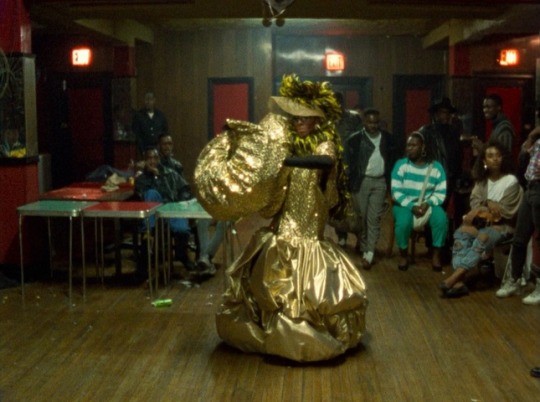
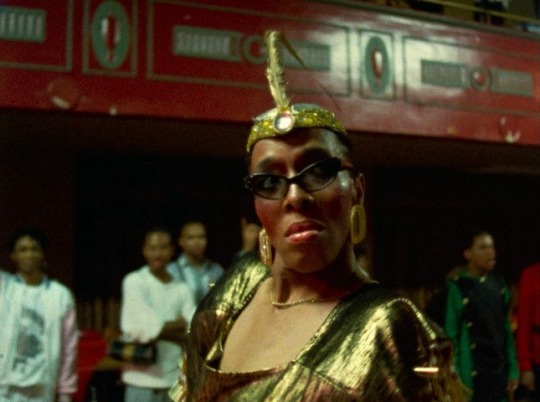
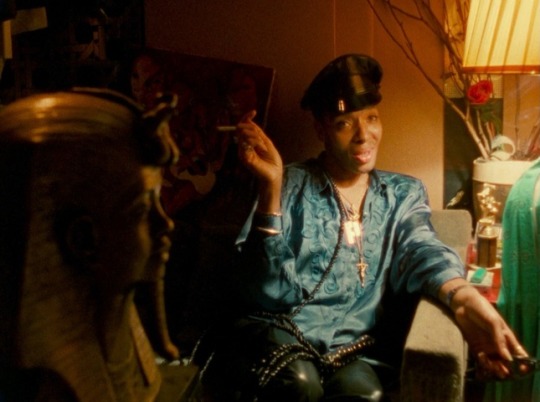


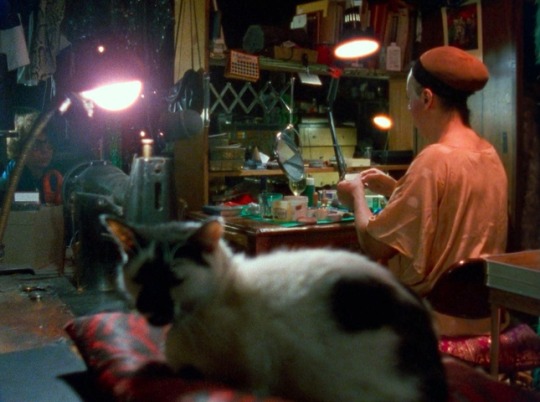


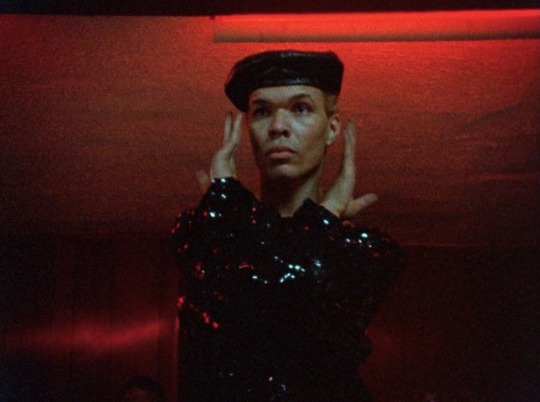
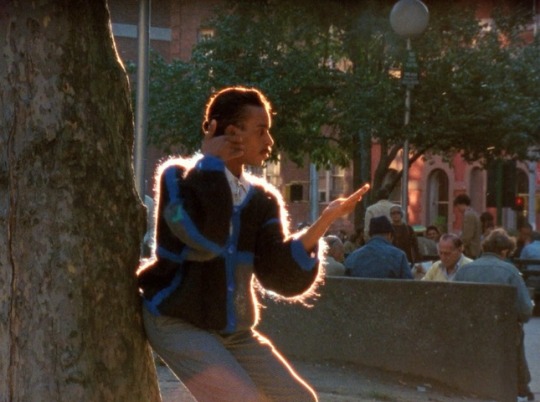
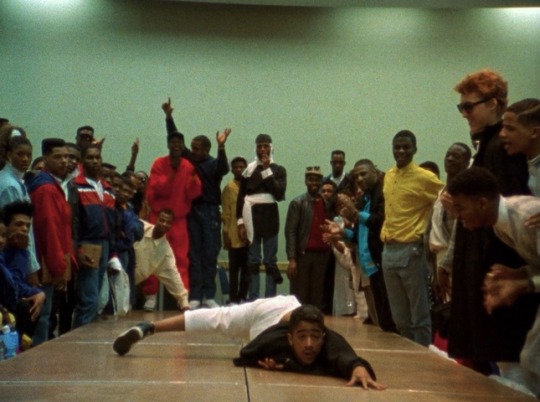
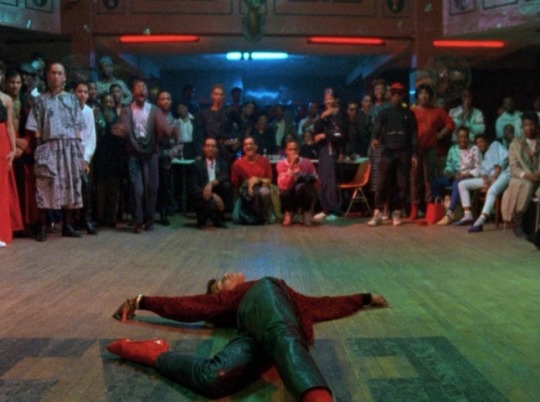




Paris Is Burning (1990)
Director: Jennie Livingston Cinematography: Paul Gibson
1K notes
·
View notes
Text



BALLROOM QUEENS
#black girls of tumblr#art girl#girlblogging#black fashion#ballroom scene#ballroom culture#pose#pose fx
35 notes
·
View notes
Text

Paris is Burning (1990)
dir. Jennie Livingston
#mine#paris is burning#pose#film stills#film#cinema#cinematography#venus xtravaganza#ballroom culture#nyc#lgbtqia#queer#lgbtq community#trans#drag#anti oppression
19 notes
·
View notes
Text
Marking Pride month in any way here is an act of defiance. The organisers of the Fola Francis Ball – named in honour of a transgender woman who died last year - only released the venue details with just hours to go before it opened. But this did not deter the more than 500 people who turned up in a district close to the thriving waterfront area of Nigeria’s commercial heartland, Lagos. Around the gated venue were abandoned car parts and warehouses known for rave parties. A thumping bassline could be heard through the door and crossing the threshold felt like stepping into an alternative reality. Inside was Lagos’s queer community, the venue, a cloak shielding them from the world outside.
#queer#ballroom#ballroom culture#ballroom dancing#dance#lgbtq#lgbt#lgbqti#pride month#nigeria#human rights#queer liberation#2024
41 notes
·
View notes
Text
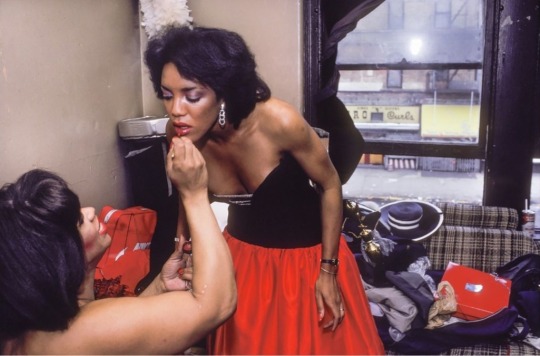
Carrie Being Made Up for the Ball, 1984.
photo & caption by Mariette Pathy Allen [website] [instagram]
#mariette pathy allen#house ball#ball culture#ballroom culture#drag#drag artist#queer#trans#transgender#vintage photography
69 notes
·
View notes
Text
80s American drag ball culture is so fascinating and cool to me from a social and historical standpoint. A while back, I watched this documentary called Paris is Burning which was released in 1990, and I am low key obsessed with it. Like, all these people were rejected by their families and society, and they often had no place to go or no one to support them. So they all ended up banding together to create chosen families. And due to general society's lack of acceptance of their forms of self expression, they decided to create a safespace that allowed them to reject these particular social norms and be themselves. This eventually evolved into a complex culture with traditions and styles of dress and language and social interactions and stuff. It's really beautiful, in a way. I have recently started getting into anthropology since it became one of my require courses, and ballroom culture is a goldmine to me.
I've actually started using it as inspiration for the world of one of my stories. It's just so real and alive and interesting, and it should be appreciated more.
#i'm queer btw#paris is burning#drag#drag ball#drag culture#ballroom culture#history of drag#queer#queerness#queer community#queer life#queer history#lgbtq#lgbtqia#lgbt pride#lgbt#lgbtq community#pride#queer pride#gay pride#lgbt history#marginalized communities#culture#drag queen#drag king#queer documentary#gender expression#gender fuckery#love to fuck around with gender like that
115 notes
·
View notes
Text
Mekhi Cuffee: "A 1 night special. LIKE A FEM QUEEN. It’s the little things. Get in. #vogue"
Source
#music#edm#house music#dance music#electronic music#instagram#vogue ballroom#vogue dance#vogue fem#voguing#vogue#ballroom culture#ballroom scene#ballroom#dancer#dance#lgbtq#gay#queer#trans#nonbinary#black queer#black lgbt#black gay#black nonbinary#black trans#ota#open to all
122 notes
·
View notes
Text
FEM QWEEN FACE AT THE 1993 HOUSE OF MONTANA BALL
15 notes
·
View notes
Text




Club Shugga at Boondocks
#queer community#lgbtqiia+#boiler room#indie sleaze#indie#photography#digital camera#ballroom culture#night life#houston#texas#htx#electronic music#dj#vintage photography#archival#aesthetic#2014 sleaze#35mm film#film photography#kodak easyshare#rave scene#party aesthetic#cobrasnake#drag queen#lgbtq community#2014 aesthetic#sleazecore#2010s fashion#nightlife
226 notes
·
View notes
Text








Last Train to St. Laurent
NYC Ball x DotsEye
#vogue#runway#legendary#ballroom#pose#lgbtq#lgbtq community#new your city#times square#manhattan#ballroom culture#ballroom scene#bizarre art#weird and wonderful#fashion#art
10 notes
·
View notes
Text





LIL UZI VERT VOGUING at COACHELLA '24 🎥via tiktok (cakesscam)
#lil uzi#lil uzi vert#coachella#coachella 2024#voguing#ballroom culture#death drop#dance#queer art#dancing#music#festival#concert#festivaltok#live music#rap#hip hop
41 notes
·
View notes